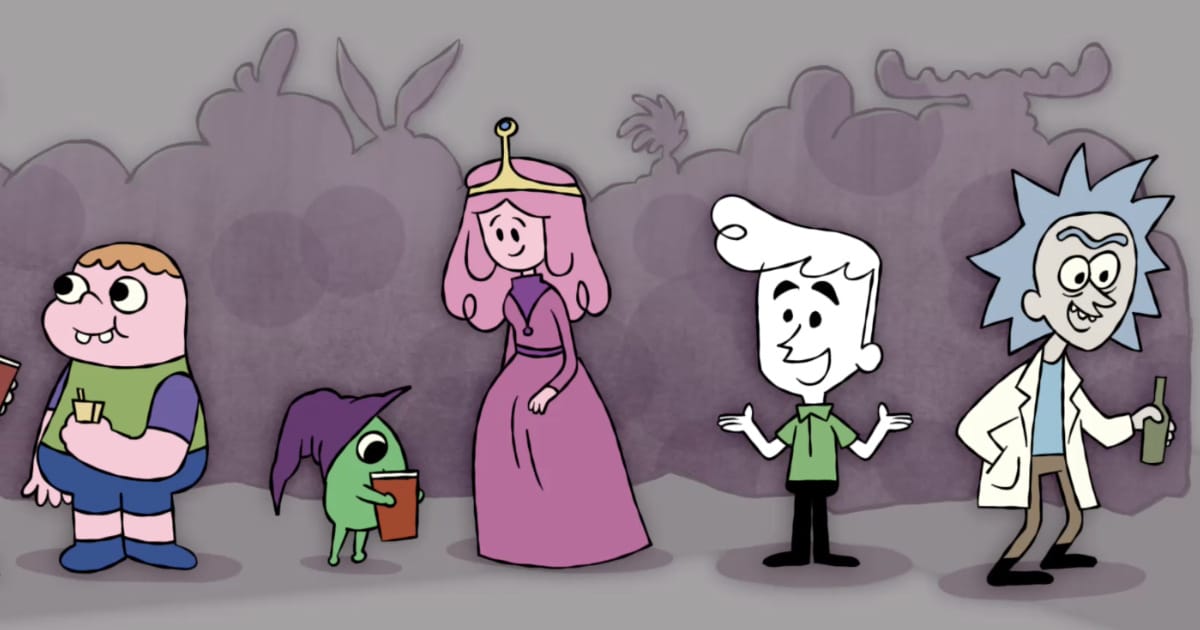
Animation Workers Ignited is a group of Animation Guild members who have made it their mission to bring awareness to the challenges animation workers are facing, in an environment where mergers, cuts, and layoffs have led to difficult conditions for artists. Through animated shorts published across X, Instagram, and TikTok, this community-run initiative illustrates the top issues that workers are facing (including the threat of AI-generated animation), and what the general public can do to help.
We caught up with two artists involved in the cause, Gene Goldstein and Laura Serrano. Gene is the president of Jellybox Studio, an independent animation house that is supporting the creation of the shorts, while Laura is an animation director at Jellybox Studio. Read on to learn about their views on Animation Guild, the struggles artists are facing, and how Animation Workers Ignited’s shorts advocate for fair working conditions in the animation industry.
For those who may not know – what is the Animation Guild, and what does it do for creatives working in animation?
Gene: The Animation Guild is a labor union for animation workers who make TV and feature animation, which stands together against the studios that take advantage of workers. The Guild exists to unite artists as one voice, protect artists’ labor rights, and address studio exploitation and bad business practices. I’ve been a member of the Animation Guild since 2015, when I first got into the industry. Since joining, I’ve witnessed the ongoing decline of working conditions for animation workers.
The shorts we’ve been working on highlight the problems artists have been facing. Each short focuses on a different issue, because it’s a multi-faceted problem. There’s a lot of factors that have led to animators being out of work, struggling to pay rent, or facing wage stagnation. Through the shorts we’re hoping to help raise awareness, and to get the general public to take notice. Unfortunately, it feels like the animation industry doesn’t have the same eyes on it that other industries do.
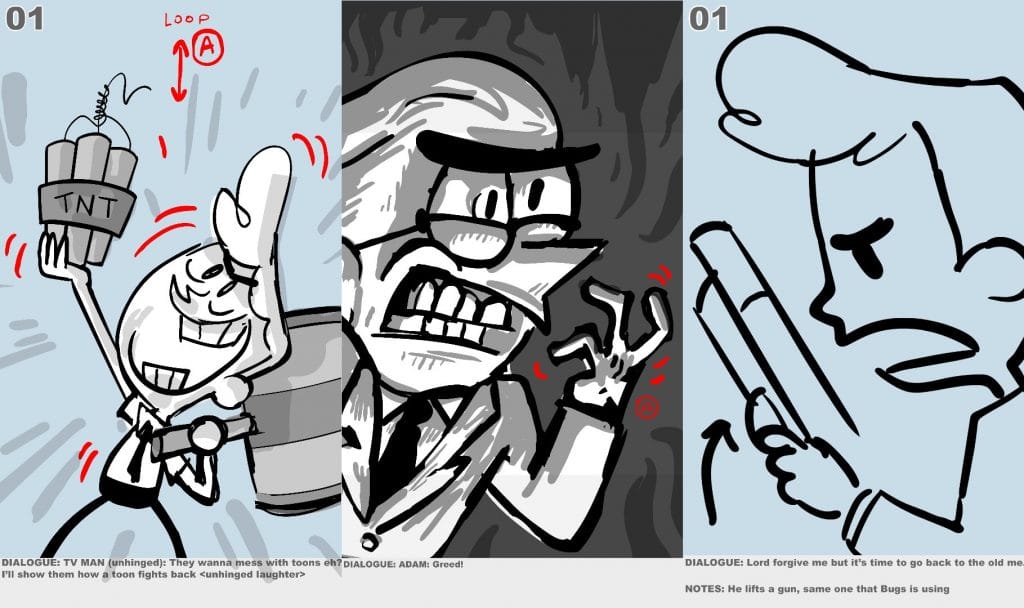
Can you share with us what Animation Workers Ignited is? Is Animation Workers Ignited affiliated at all with the Guild?
Gene: Animation Workers Ignited are a passionate group of Guild members. We aren’t technically affiliated with the Animation Guild – we’re just a group of Guild members that want to fight for better rights and raise awareness. We want to see a stronger Guild, and better rights for workers and everyone working on these beloved animation shows. So we feel we deserve to be treated better, especially considering how vital we are to the animation industry.
Laura: I live in Spain, and so I am not a member of the Animation Guild. But the problems that artists in the US are facing are being faced in Spain as well.
Gene: The Animation Guild [IATSE Local 839] only extends to US workers and most members are based in Los Angeles. But there are lots of artists around the world that want to support US animators. It’s been great to have Laura on board, and she has been incredibly supportive of our cause.
Gene, what has your personal experience with the Animation Guild been like?
Gene: I’ve been a member for years, and it’s been nice to know that I have the support of a union. The Guild has a long history of protecting animation workers, and it’s been essential. The reality is that If there isn’t a Guild setting wage minimums and providing benefits to workers, studios will always do the bare minimum. They will always ask more of their workers, and give less. And so the support of the Guild is not something I take for granted.
We need the Guild more than ever right now because working conditions will only continue to get worse. With the victories that SAG and WGA got last year, it feels like now is the time for animation workers to push back against unfair practices and fight for their rights.
The people in the Guild are incredibly passionate and they care about the industry. They want animation workers to have work-life balance, earn a decent living, do work they are passionate about, and not burn out, or be kicked out. Hopefully, with everyone united, we can use the Guild to create a better working environment for artists.

As part of your community efforts, Animation Workers Ignited has been publishing animated shorts that bring to attention important issues that are impacting the animation industry. How did the idea for these shorts come about?
Gene: Mike Rianda (Director of Mitchells Vs. The Machines) reached out to my studio, Jellybox, to create these shorts. I had worked with Mike before on shorts that were political in nature, so he knew that I had the producing know-how to execute.
Mike is a super busy guy, and so I took it upon myself to get help from Animation Workers Ignited and Jellybox to see how we could execute this with the resources we had. Pretty early on, we decided we wanted to reach out to Adam Conover, because he has been such a vocal spokesperson for SAG and WGA.
We did so, and without hesitation, he volunteered to be part of the project. With each short, and as they gain more traction, more people (including many iconic voice actors) are getting involved and volunteering. It’s super encouraging to see how many people we have been able to unite with this project.
Each short touches on a specific concern that is impacting the animation industry. What is one of the major issues that animation workers are facing right now, that the shorts are bringing attention to?
Gene: The short we just released [at time of interview] is about the impact of AI on the animation industry. Without a doubt, corporations will always try to find cheaper ways to produce content. And AI is offering new opportunities for that.
If we don’t push back right now, many animation workers will lose their jobs. And the use of AI will also hurt the product. Animation is a very human medium; Even when it’s digital, it’s made by hand. It involves human writing, human drawing. It’s the human element that makes animation expressive.
In recent years we’ve seen many consolidations. Everytime this happens, tons of shows get cut and there are lots of layoffs. Peoples’ careers have been halted, or ruined, because of all of these high level executive decisions to save a buck in the short term. That’s why we do the shorts. To put a fun twist on our misery and to get people to pay attention. That’s the important thing.
Laura: Aside from learning about issues like AI and animation, we hope that people learn from these shorts that animators really care about the industry and the artistry behind it. That they put their hearts into it, and that these animations have soul and are made with love.

During the peak pandemic years, the animation industry was booming. It seems as though there’s been a sudden change, from booming, to major cuts. What do you think has caused this?
Gene: Since people couldn’t be on set or on location for live-action shoots during the pandemic, the animation industry kept studios afloat. As an industry, we were able to pivot fast to a collaborative remote work model that could function even during pandemic lockdowns and restrictions. I think the sudden downturn of the industry is probably tied to the global economic downturn.
Laura: And in some cases, it isn’t about the money. It’s about people not caring, not knowing. I think some studios don’t recognize the value and potential of animation, and so it gets cut in favor of other types of productions.

The shorts include character cameos that lots of people will recognize. What is the strategy behind leveraging recognizable people and voices?
Gene: We had a two-month long writing process to break down what issues the shorts would cover, how to condense them, how to sandwich intros, and how to convey a message and call-to-action. We knew that the shorts would need to work on social media, which is a specific type of audience. It’s tough to capture and hold the attention of people scrolling. So we had to think of ways to get them to pay attention and stick around.
We figured that cameos would be one tactic for holding attention, and it seems to be working pretty well! It has the added bonus of getting people to engage with the content. People like to comment about who they’d like to see cameo in future shorts, for example.
Laura: The cameos also help to show that everyone across the industry truly is united. When recognized voices and characters appear, it can show the average viewer the scope of the impact of the issues that our shorts are talking about.
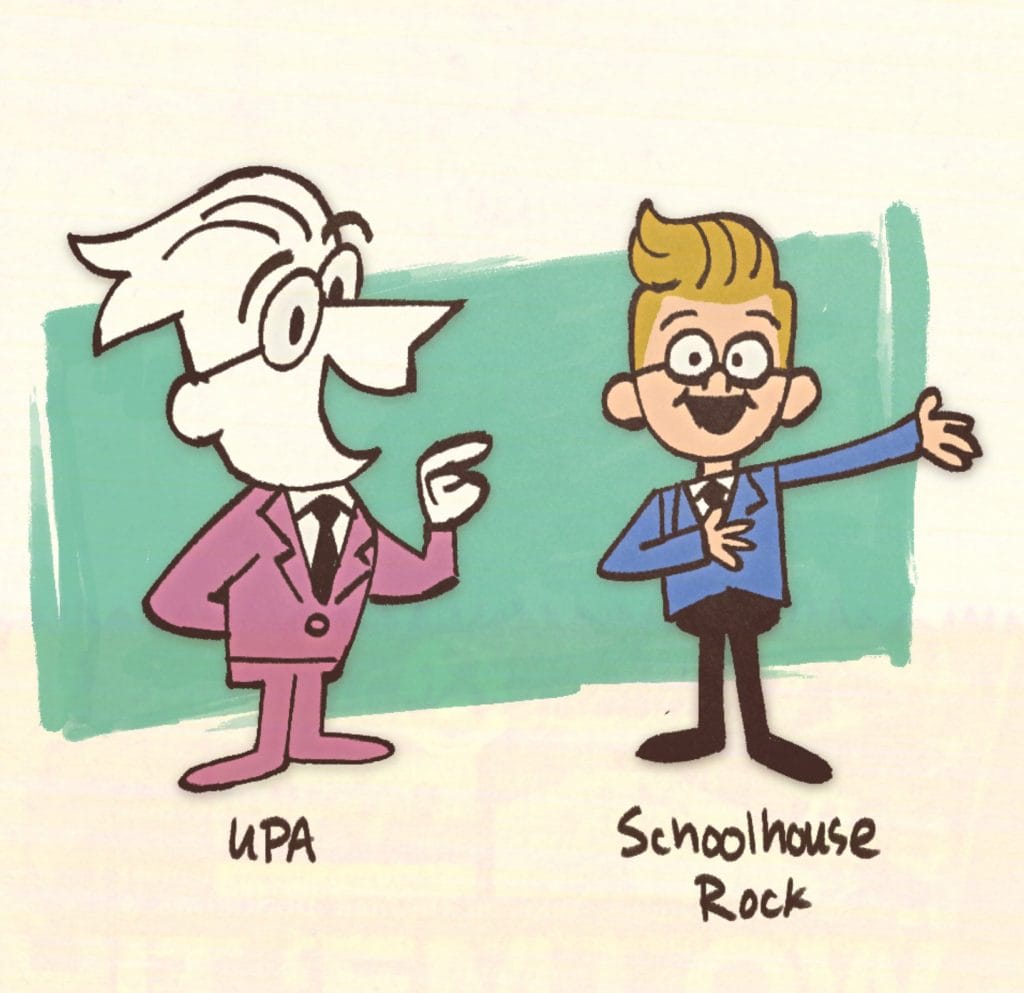
In watching the shorts, I found that they take issues that are industry-specific and explain why these issues are relevant to people who aren’t working in animation too. Is the goal to spread broad and general awareness?
Gene: Anyone working in animation is well aware of all the problems, and Animation Workers Ignited isn’t trying to talk down to anyone. The main goal of the shorts truly is to grow public awareness. We know that animation audiences are passionate about it, and that they want to see quality work and longer seasons. We are using these shorts to let the general public know that animation workers are hurting. By creating this visibility, we can create pressure.
Laura: Yes, exactly. The work that goes into animation is pretty invisible to the general public. So the shorts are helping to bring visibility to that. It’s important that the general public learn what is going on, because we need the executives at studios to know that their unfair labor practices and conditions aren’t a secret.
Gene: When SAG was doing negotiations, actors who are widely beloved and whose faces people see all the time on their screens were talking about what was happening, and how it affected them. It’s easy to sympathize with people who you are so used to seeing.
Animation doesn’t really have those ‘faces.’ We have showrunners and they have been very vocal, but they aren’t recognizable public faces. This is another reason why getting voice actors involved is huge – they can help extend the reach of our work.
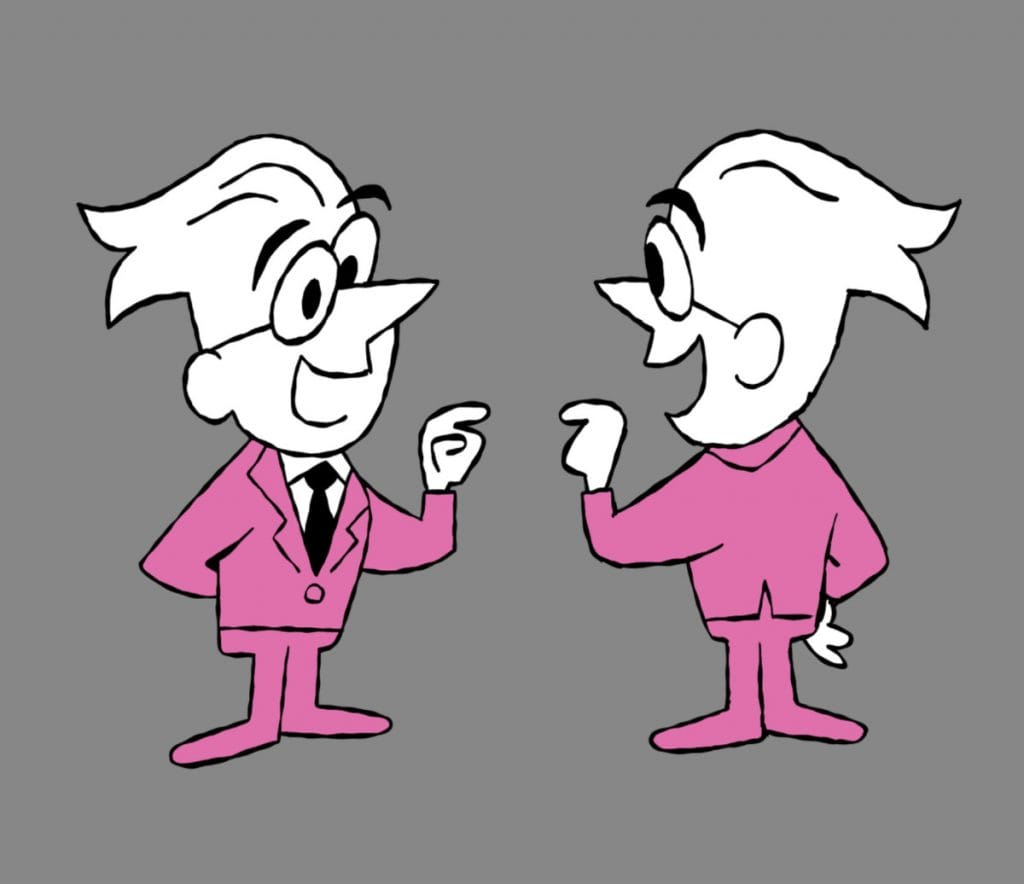
The shorts have a unique art style – how did you land on, and implement this style for them?
Gene: Our art director, Kasey Williams, was tasked with figuring out the most appealing and efficient way to create shorts that would capture attention. We referenced shows from the past, like Rocky and Bullwinkle. That era was incredibly smart at making visually appealing but simple animation. It’s straight-forward but iconic, and that type of style makes it easy to design new assets. We’re able to keep the backgrounds pretty straightforward. We also find that people enjoy seeing their favorite characters in that style, and it doesn’t create a ton of work for our animators.
Laura: The character designs are really simple, and there is a really simple color palette. I’ve been building a pose library that I’ve saved from the characters I’m animating. It’s speeding up the process a lot.
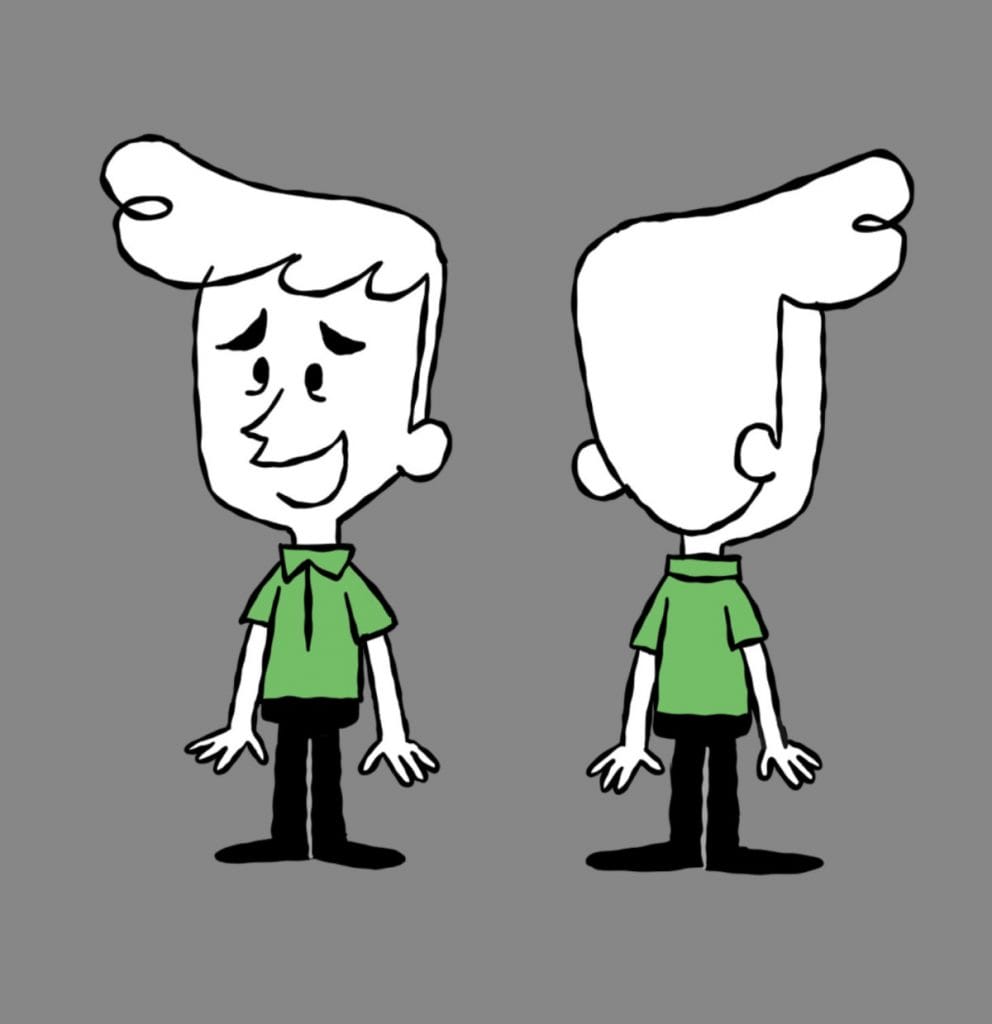
How have the shorts been received? What kind of responses are you hearing back from the general public?
Gene: The response to the shorts has surpassed what we expected by so much. The first short did very well, and we figured that would be the peak. But every short is doing better and better than the last. I was worried that the shorts weren’t going to engage people long-term, but they are sticking around! People are commenting, liking, and sharing. The numbers are incredible, and it’s super validating because the numbers mean our message is spreading.
Laura: Yes, the shorts have had incredible reach, it’s been amazing to see. They are reaching 1 million views and higher, and on TikTok we’ve earned over a million likes! Likes aren’t as easy to earn as views, so that’s really cool to see.
And on that note, what can people who care about animation do to support animation workers right now?
Gene: People can support animation artists by engaging with our shorts. Sharing them, commenting on them, liking them, and following the Animation Workers Ignited accounts on TikTok, Instagram, and Twitter is huge. The more people spread these shorts, the louder our voice becomes. And of course, I hope people will follow Jellybox, too!
- Want to learn more about the Animation Workers Ignited shorts? Be sure to follow the group’s LinkTree. You can also visit Jellybox Studio’s website to see more projects from Gene and the Jellybox crew.
- Ready to get started on your own short series? Artists can download a free 21-day trial of Toon Boom Harmony.



